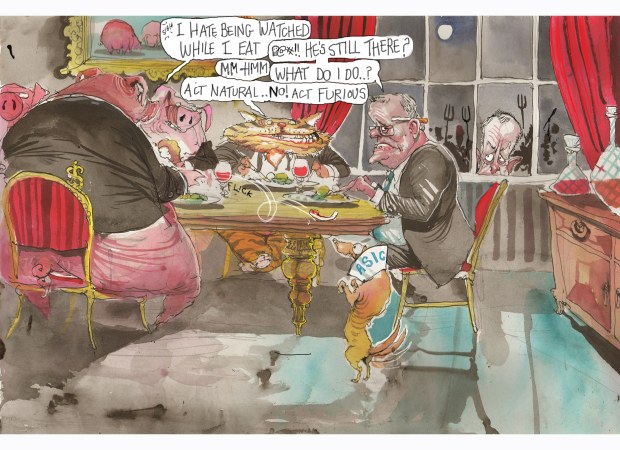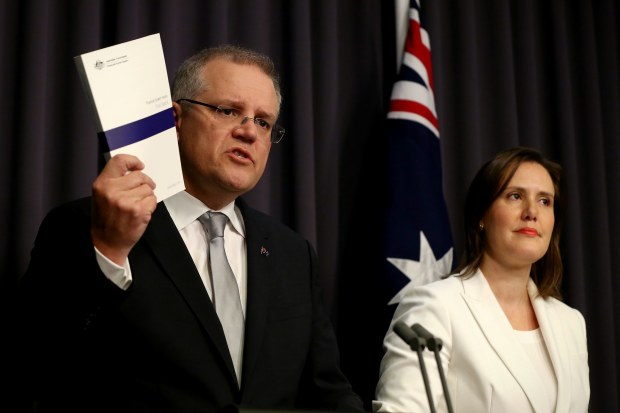Greg Medcraft does a Houdini and emerges as banks' new super cop

Corporate regulator Greg Medcraft has been described as the Houdini of the regulatory set.
Eighteen months ago, when Medcraft called Australia a "bit of a paradise for white collar crime", finance minister Mathias Cormann rang journalists incandescent with rage. Isn't this the "cop on the beat" who is meant to be striking fear into the hearts of corporate criminals, he asked?
This year, things took a turn for the worse when Medcraft missed out on the job as the next head of Britain's financial regulator. Government sources said ASIC needed to be whipped into shape and the Labor-appointed regulator had no chance of being re-appointed when his term expired in May

ASIC boss Greg Medcraft is back against all the odds. Chris Pearce
But politics is a fickle game.
A series of high profile bank scandals have intervened to change Medcraft's fortunes. The fall-out from scandals surrounding banks' financial planning arms, the CommInsure life insurance debacle and the regulator's high profile cases against Westpac Banking Corp and ANZ Banking Group have put the spotlight firmly on the banks.
Election adds political edge
The launch of the federal election has given the opposition's call for a royal commission into the banks leverage with the public. ASIC's persistent calls for more power and resources – which Labor says have already been made 42 times – have suddenly become a priority.
Medcraft was rebadged on Wednesday as the bank super cop and given the resources he badly needs to do the job. His long sought user-pays system was given the green light and will now be the legacy of his term as chairman. He will be granted bigger penalties and a far-reaching product intervention power, as well as the freedom to headhunt high-priced recruits from the financial sector.
Treasurer Scott Morrison hardly gave the former investment banker a ringing endorsement on Wednesday, pointedly telling reporters that Medcraft's additional 18 months was an "extension" to manage the changes, rather than a "reappointment", which is usually three years.
"We expect him to get the job done," Morrison replied coldly, when asked whether it was a slap in the face.

ASIC chairman Greg Medcraft - the 'Houdini' of the regulatory set. Dominic Lorrimer
But Medcraft can count himself lucky.
Election politics and the need to beef up the regulator to respond to Labor's calls for a royal commission mean he has been granted virtually everything on his wish list. The government's rushed response means that recommendations for a tough shake-up at ASIC have been virtually ignored.
Capability review finds flaws
The 186-page capability review commissioned by the government back in July 2015 makes sober reading, citing major cultural flaws within ASIC.
PwC time-use analysis undertaken by the authors – Productivity Commissioner Karen Chester, David Galbally, QC, and Professor Mark Gray – revealed ASIC commissioners spent up to 80 per cent of their time on internal duties rather than external stakeholders.

Gallery: David Rowe
International benchmarks show they should be spending as much as half their time focused on external stakeholders and big picture strategic issues, such as how to better catch bad guys.
"Change is required to reorient them 'upward and outward' rather than 'downward and inward'," the report concluded.
The panel also said the government needs a proper process to appoint commissioners, using independent headhunters and external appointment panels.
But the government has ignored those recommendations and granted most of Medcraft's wish list.

Treasurer Scott Morrison and Assistant Treasurer Kelly O'Dwyer announce the ASIC package. Alex Ellinghausen
The $127 million package over four years will effectively restore the cuts made by the Abbott government in the 2014 budget, and boost ASIC's current $312 million budget to around $350 million a year.
The money includes $61 million to upgrade ASIC's technology and data systems, which the capability review found were sorely lacking, and $57 million for ongoing surveillance and enforcement.
"I'm delighted the government has shown the confidence to extend my term and get on with the job, to implement the recommendations of the financial system inquiry and the fabulous new ability to invest in data," a relieved Medcraft told reporters.
Banks to pay for being policed
ASIC gets the user-pays system that Medcraft has been seeking for a long time. The system is based on how much of the regulator's time a supervised entity engages. This means the banks – which are listed businesses, as well as holding both financial service licences and credit licences – will take on the lion's share of the beefed-up $350 million budget from the second half of 2017.
ASIC analysis of how the system will work shows that a large listed company is likely to pay $538,000, while a big investment bank will pay $768,600 and a big bank will face a levy of more than $4 million.
Medcraft will be excited that ASIC will be removed from the Public Service Act "to support ASIC to more effectively recruit and retain staff in positions requiring specialist skills".
ASIC insiders have long complained that if you "pay peanuts, you get monkeys" and in the world of high frequency trading, dark pools and blockchain, the regulator needs to hire former bankers, brokers and even scientists and engineers to get ahead of the game.
Banks are already wary of a proposed new product intervention power, which ASIC will be able to use to ban financial products or require warnings be given to investors, such as "your capital is at risk". The power will be more far reaching than most realise at this stage.
Before ASIC's recent cases against ANZ and Westpac, Medcraft had taken the focus off big legal actions which were the legacy of his predecessor Tony D'Aloisio, who had a commission full of lawyers.
Medcraft, a former investment banker, is expected to be encouraged back into the legal arena with the appointment of an extra commissioner focused on prosecuting crimes in the financial services industry.
Who's in ASIC's sights
It is not surprising the regulators were excited to call a press conference to announce how they plan to spend their early Christmas present.
ASIC deputy chair Peter Kell says he has identified a "target list" which will go towards reviewing the financial advice sector. The list includes a "shadow shopping" project, a review of the sale of super investment products, particularly through the banks, and a review of the way the banks report misconduct internally.
It will also conduct a review in the areas of responsible lending and a review of mortgage brokers' remuneration structures. Loan fraud and credit card marketing practices will also be on the agenda.
The corporate regulator will also zone in on the insurance sector, including a review of claims handling by major insurers within the banks and a review of direct sale of life insurance.
Medcraft can hardly believe his luck.
Subscribe to gift this article
Gift 5 articles to anyone you choose each month when you subscribe.
Subscribe nowAlready a subscriber?
Latest In Financial services
Fetching latest articles